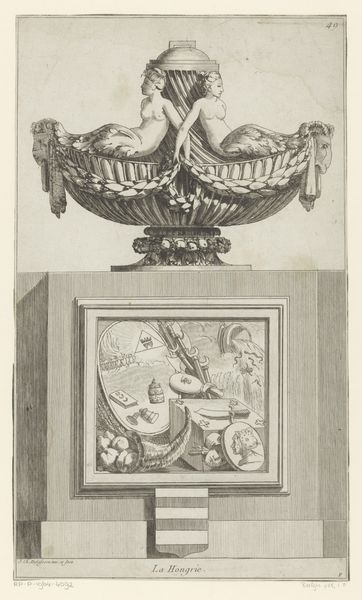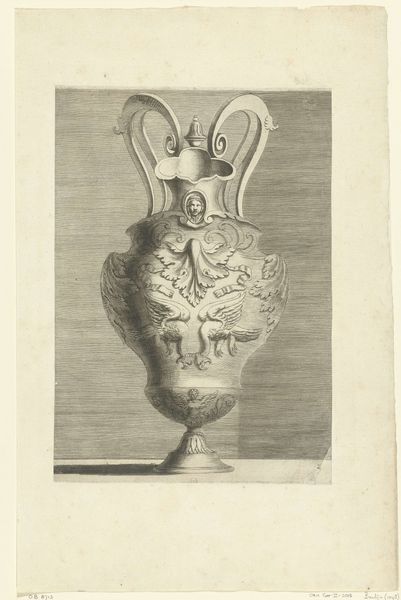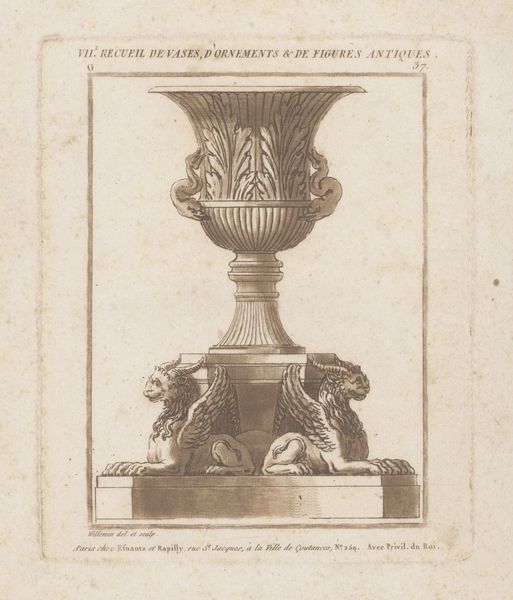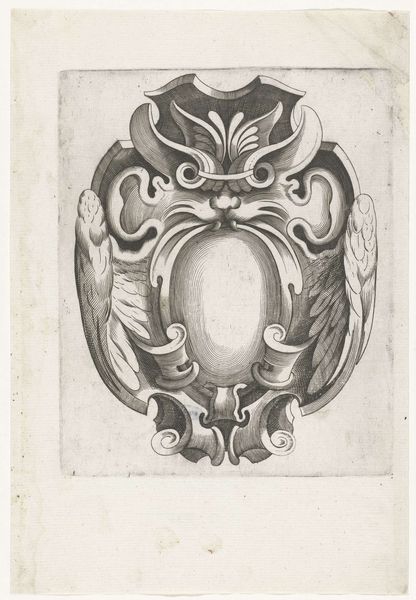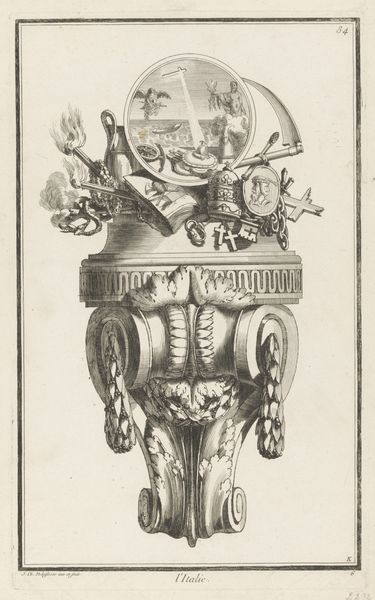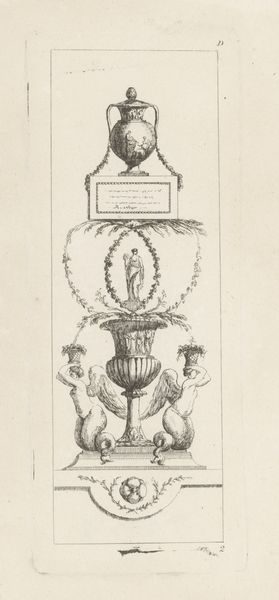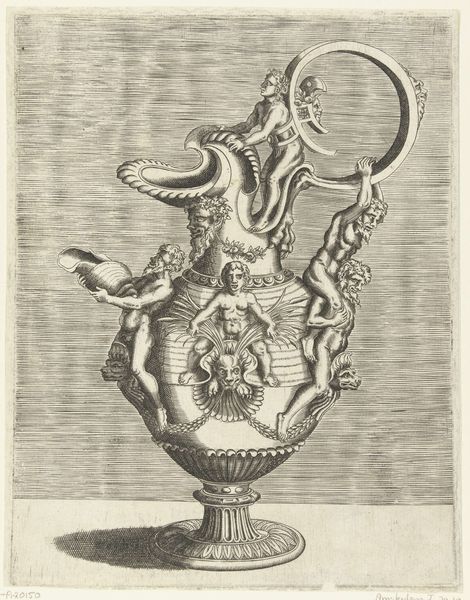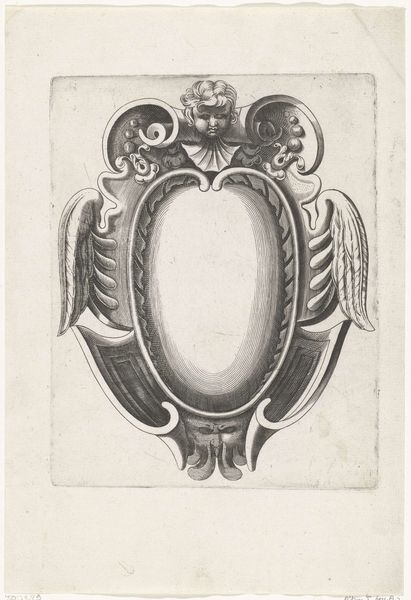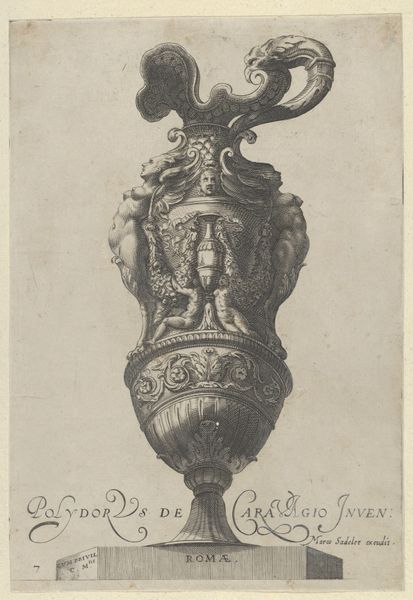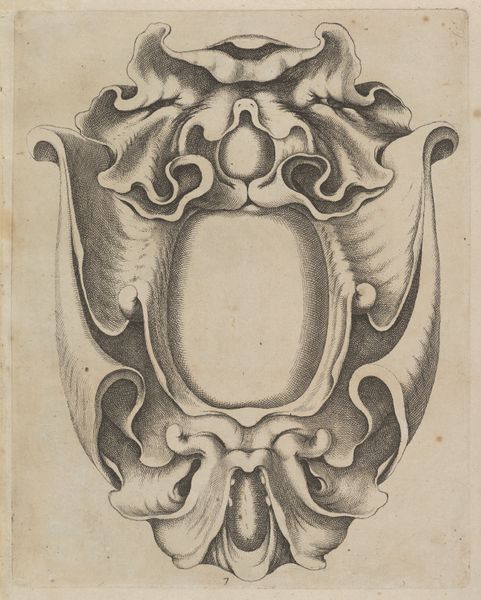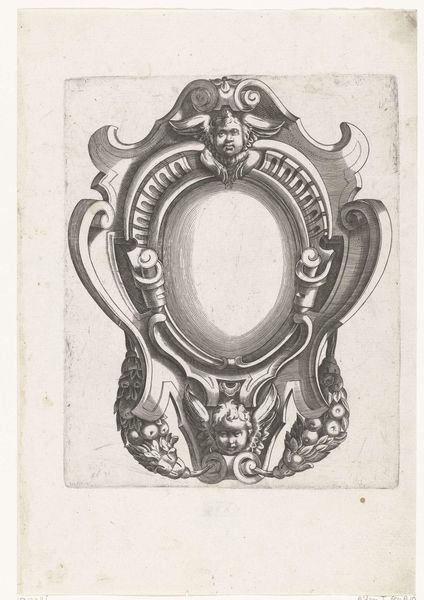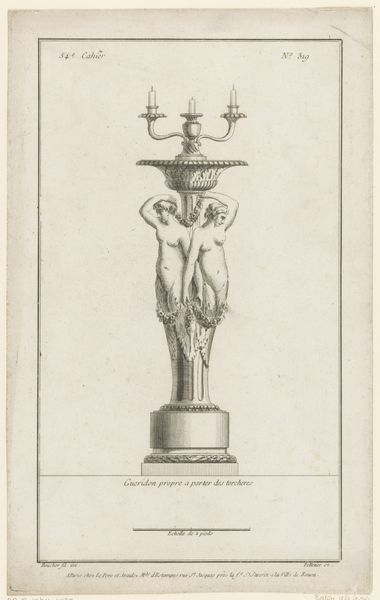
Dimensions: height 138 mm, width 99 mm
Copyright: Rijks Museum: Open Domain
This 18th-century engraving by Juste Nathan Boucher depicts a vase adorned with fantastic creatures and garlands. Observe how the vase is anthropomorphized, its handles curling like horns above a grotesque mask. These monstrous faces, or mascarons, are not merely decorative. They guard entrances, ward off evil, and have roots stretching back to antiquity. The Romans placed them on keystones to frighten away ill fortune. Similarly, the leafy garlands symbolize growth, abundance, and continuity, echoing ancient rituals celebrating the cycles of nature. Think of the Dionysian festivals, where vines and masks played a crucial role. The grotesque mask, seemingly frozen in a scream, hints at the human psyche's depths. It evokes both fear and fascination, tapping into our primal anxieties. This image, like a recurring dream, appears and reappears throughout history, reminding us of the enduring power of symbols and our collective memory.
Comments
No comments
Be the first to comment and join the conversation on the ultimate creative platform.
